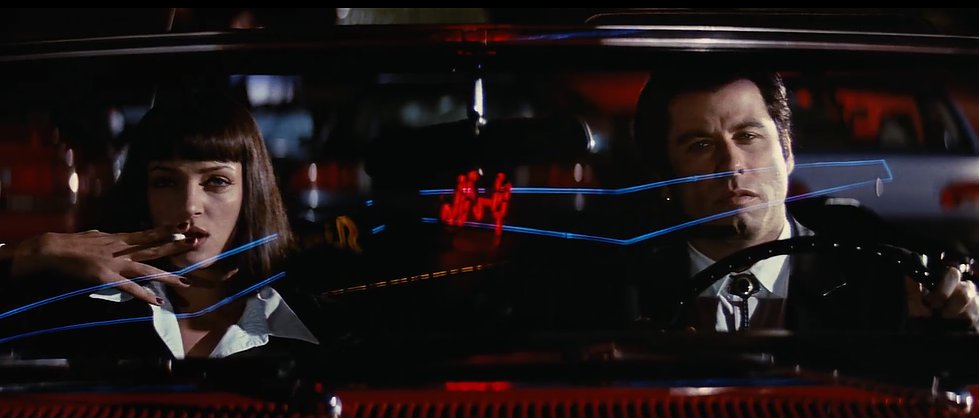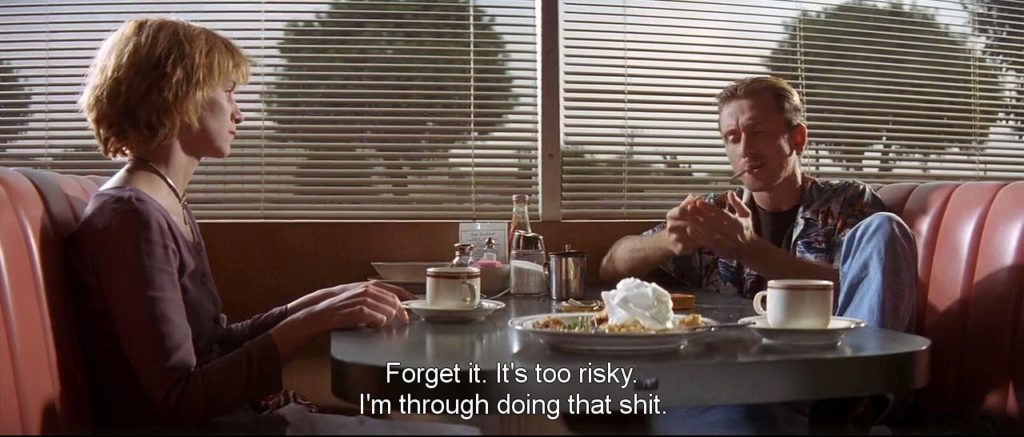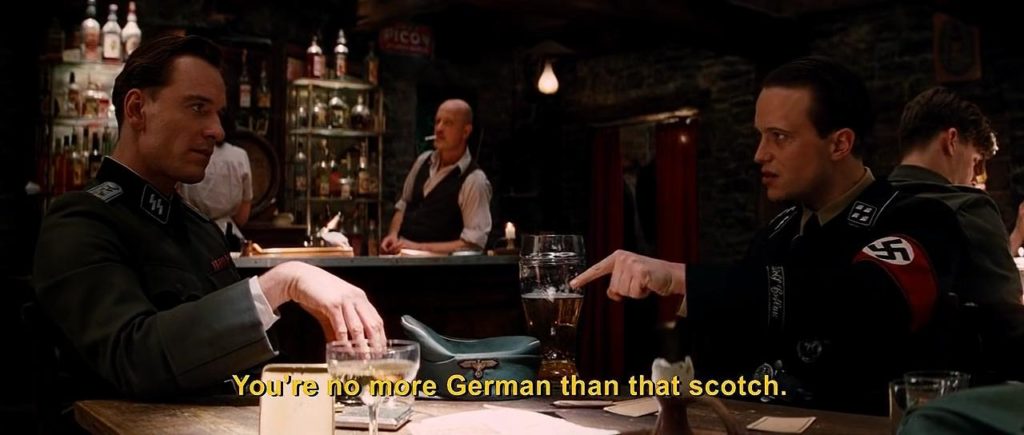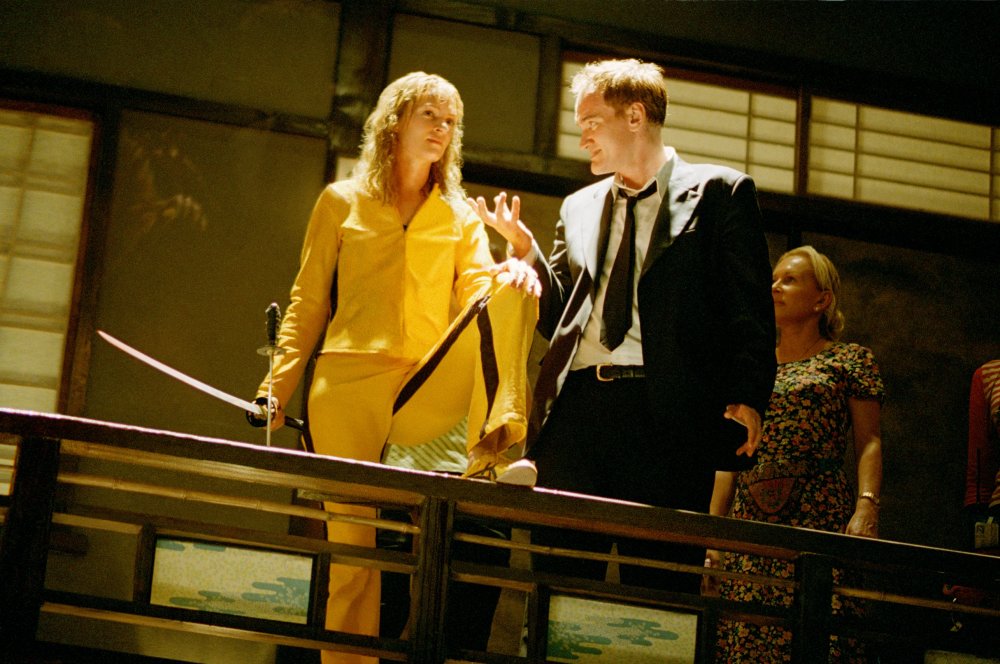 The Death of the Author is an essay written by the French literary critic and theorist Roland Barthes. The 1967 essay argues against the traditional literary criticism’s practice of including the intentions and biographical context of an author in an interpretation of a text, and instead argues that writing and creator are unrelated. In his paper, while elucidating the author’s intentions of describing a text, Barthes argues that every narrative is interwoven with multiple codes. Although one might impose temporal and generic structures onto the polysemy of codes, he puts forth the point that every text is marked by the multiple meanings suggested by the five codes. In his essay S/Z, the theorist further expanded his ideas by stating that there are five narrative codes – The Hermeneutic Code (HER.), The Proairetic Code (ACT.), The Semantic Code (SEM.), The Symbolic Code (SYM.) and The Cultural Code (REF.).
The Death of the Author is an essay written by the French literary critic and theorist Roland Barthes. The 1967 essay argues against the traditional literary criticism’s practice of including the intentions and biographical context of an author in an interpretation of a text, and instead argues that writing and creator are unrelated. In his paper, while elucidating the author’s intentions of describing a text, Barthes argues that every narrative is interwoven with multiple codes. Although one might impose temporal and generic structures onto the polysemy of codes, he puts forth the point that every text is marked by the multiple meanings suggested by the five codes. In his essay S/Z, the theorist further expanded his ideas by stating that there are five narrative codes – The Hermeneutic Code (HER.), The Proairetic Code (ACT.), The Semantic Code (SEM.), The Symbolic Code (SYM.) and The Cultural Code (REF.).
Creating an Audience Interaction with The Hermeneutic Code
In his literary paper, The Death of an Author’, Roland Barthes writes:
“…since language is a system and since what the movement sought was, romantically, a direct subversion of all codes — an illusory subversion, moreover, for a code cannot be destroyed, it can only be “played with”; but by abruptly violating expected meanings (this was the famous surrealist “jolt”), by entrusting to the hand the responsibility of writing as fast as possible what the head itself ignores (this was automatic writing), by accepting the principle and the experience of a collective writing, surrealism helped secularize the image of the Author.”
He further elaborated this concept of a “jolt” in his paper S/Z, where the theorist coined the term “The Hermeneutic Code” (HER). The Hermeneutic code or Enigma code describes any part of a narrative or of a film that is unexplained to the viewer. The code is a means to lay-off the viewers from a structure created by the author or writer. Adopted throughout most thrillers, the hermeneutic code is the key to entertaining the viewer and withholding tension. In the film, it is expressed with following three techniques – Snares, Equivocations and Jammings.
Snares
The technique of “Snares” is employed when the truth in a series of events is purposely avoided by either the narrative structure or by how the characters react to certain situations. This narrative technique can be seen in the “Vincent Vega and Marsellus Wallace’s Wife” section of Quentin Tarantino’s Pulp Fiction (1994). In this particular section, we see that there is a build-up of romantic and intellectual interest between John Travolta’s Vincent Vega and Uma Thurman’s Mia Wallace. After a night of nice dinner and a pleasant dance, both the characters drive back to Wallace’s house. The director chooses to glacially establish a certain sense of peace and calm. With Neil Diamond’s “Girl, You’ll Be a Woman Soon” playing on the background, the scene perfectly infiltrates the perceptive minds of the viewers, who expect a romantic conclusion to the segment.  However, it is here where Tarantino applies this concept – while the scene builds up to a romantic end between Vincent and Mia, the scene takes a sudden turn with Mia overdosing on cocaine. This completely changes the course of the events, as the scene is followed by Vincent frantically trying to save Mia. From a calmness created by Tarantino, the scene plummets into high adrenaline.
However, it is here where Tarantino applies this concept – while the scene builds up to a romantic end between Vincent and Mia, the scene takes a sudden turn with Mia overdosing on cocaine. This completely changes the course of the events, as the scene is followed by Vincent frantically trying to save Mia. From a calmness created by Tarantino, the scene plummets into high adrenaline.
Equivocations
An “Equivocation” is used to provide the viewer with a partial or incomplete answer as to how the film or the narrator will end. It is imperative to understand that an equivocation is not utilised at the end. An equivocation is created with different frames through which the author can exploit quite lucidly. In Tarantino’s directorial debut Reservoir Dogs (1992), the narrative is played in a non-linear narrative fashion, where the film is built upon simultaneous time frames, which impacts the viewers’ understanding of the events taking place. The impact of the equivocations kick-off as the viewer partially understands and comments upon as to what is happening after the diamond heist goes wrong.  However, despite gaining information, many issues and questions raised when the film is edited in an unorthodox fashion. Similarly to Reservoir Dogs, our film will use equivocations to engage the viewers and keep them entertained throughout. The technique is also used to buy time for the creator to indulge in character sketches and forming micro-narratives. In this particular film, equivocation is applied to not only to create a dramatic ending but also to create established character facts as different segments to knit it to the narrative ending. While the equivocation employed here is quite discreet, Tarantino used it extensively in the aforementioned Pulp Fiction. In this film, Tarantino divides it into seven distinct fragments –“Prologue — The Diner” (i), Prelude to Vincent Vega and Marsellus Wallace’s Wife:”, “Vincent Vega and Marsellus Wallace’s Wife”, Prelude to “The Gold Watch” (a — flashback, b — present), “The Gold Watch”, “The Bonnie Situation” and “Epilogue — The Diner” (ii). The film’s narrative is told out in chronological order, and follows three main interrelated stories – the Mob contract killer Vincent Vega, who is the protagonist of the first story, prize-fighter-boxer Butch Coolidge, who is the protagonist of the second, and Vincent’s partner Jules Winnfield, who is the protagonist of the third. The seven mini-stories intersect the primary micro-narratives to form the meta-narrative. The narrative begins with a diner hold-up staged by a couple – Ringo and Yolanda, which then picks up the stories of Vincent, Jules, and Butch. The circle is finally completed when the narrative returns to where it began, i.e. in the diner. This creates a hallucinatory effect for the viewers who are too meddled too understand the bigger perspective, and the director gets enough time to build up a meaty conclusion.
However, despite gaining information, many issues and questions raised when the film is edited in an unorthodox fashion. Similarly to Reservoir Dogs, our film will use equivocations to engage the viewers and keep them entertained throughout. The technique is also used to buy time for the creator to indulge in character sketches and forming micro-narratives. In this particular film, equivocation is applied to not only to create a dramatic ending but also to create established character facts as different segments to knit it to the narrative ending. While the equivocation employed here is quite discreet, Tarantino used it extensively in the aforementioned Pulp Fiction. In this film, Tarantino divides it into seven distinct fragments –“Prologue — The Diner” (i), Prelude to Vincent Vega and Marsellus Wallace’s Wife:”, “Vincent Vega and Marsellus Wallace’s Wife”, Prelude to “The Gold Watch” (a — flashback, b — present), “The Gold Watch”, “The Bonnie Situation” and “Epilogue — The Diner” (ii). The film’s narrative is told out in chronological order, and follows three main interrelated stories – the Mob contract killer Vincent Vega, who is the protagonist of the first story, prize-fighter-boxer Butch Coolidge, who is the protagonist of the second, and Vincent’s partner Jules Winnfield, who is the protagonist of the third. The seven mini-stories intersect the primary micro-narratives to form the meta-narrative. The narrative begins with a diner hold-up staged by a couple – Ringo and Yolanda, which then picks up the stories of Vincent, Jules, and Butch. The circle is finally completed when the narrative returns to where it began, i.e. in the diner. This creates a hallucinatory effect for the viewers who are too meddled too understand the bigger perspective, and the director gets enough time to build up a meaty conclusion.
 Quentin Tarantino uses The Hermeneutic Code and deconstructs into three distinct segments. It is interesting to note that this narrative code provides the creator with an opportunity to ascend a seemingly simple concision into a dramatic one. In Pulp Fiction, Tarantino deconstructs the conclusion in the segment “Epilogue — The Diner” (i), Tarantino brings in the incomplete story of “Prologue — The Diner” (i). Here, continuing the restaurant scene, we see that Pumpkin and Honey Bunny, two criminals, hold up the restaurant. While Pumpkin tries to bully Jules into handing over the money, is overpowered by him. Now held at gunpoint, Honey Bunny becomes hysterical and points her gun at him. Vincent returns with his gun trained on her, creating a Mexican standoff. Jules recites the biblical passage, expresses ambivalence about his life of crime, and allows the robbers to take his cash and leave. Jules and Vincent leave the diner with the briefcase. Now, this scene may seem like a usual conversation, but by the use of the hermeneutic code, Tarantino intensifies it by bringing in various allegorical and metaphorical themes created in the previous segments.
Quentin Tarantino uses The Hermeneutic Code and deconstructs into three distinct segments. It is interesting to note that this narrative code provides the creator with an opportunity to ascend a seemingly simple concision into a dramatic one. In Pulp Fiction, Tarantino deconstructs the conclusion in the segment “Epilogue — The Diner” (i), Tarantino brings in the incomplete story of “Prologue — The Diner” (i). Here, continuing the restaurant scene, we see that Pumpkin and Honey Bunny, two criminals, hold up the restaurant. While Pumpkin tries to bully Jules into handing over the money, is overpowered by him. Now held at gunpoint, Honey Bunny becomes hysterical and points her gun at him. Vincent returns with his gun trained on her, creating a Mexican standoff. Jules recites the biblical passage, expresses ambivalence about his life of crime, and allows the robbers to take his cash and leave. Jules and Vincent leave the diner with the briefcase. Now, this scene may seem like a usual conversation, but by the use of the hermeneutic code, Tarantino intensifies it by bringing in various allegorical and metaphorical themes created in the previous segments.
Elevating the Scene with the Proairetic Code (ACT)
Along with the Hermeneutic code, the Proairetic code is also used in the film to create tension through the use of actions and activities performed by the main character throughout the film. Barthes described that these two codes work together to build and create tension in a film and keep the viewer interested in the events about to follow. In S/Z, Barthes states:
“Two sequential codes: the revelation of truth and the coordination of the actions represented: there is the same constraint in the gradual order of melody and in the equally gradual order of the narrative sequence.”
Tarantino actively endorses this concept in films. His movies resonate with such dramatic elements. Every scene is divided into three distinctive sections – The introduction, the middle and the conclusion. The Proairetic Code deconstructs a narrative by distinctively establishing a primary action and a secondary action. The primary action successfully throws light on a character set as the scene protagonist who steers the scene and the secondary action sets characters complimented the primary character’s actions. When the scene or the narrative is divided into the aforementioned sections, readers or the audience get a chance to involve themselves in the narrative. As a result, any text employing the Proairetic has no set “protagonist”, as it changes on a situational basis. In Tarantino’s mystery Western The Hateful Eight (2015), the filmmaker in his archetypical style divides the film character wise. From a mundane cart ride to a gory encounter prospect, every scene is structured through a proairetic code. For example, in this film, Tarantino uses different time frames to set a protagonist. The last scene is divided into two sections – the past and the present. The past sets Channing Tatum’s Jody Domergue as the protagonists as he plans a trap for the bounty hunters to save his sister. Following this scene, we see the present where the bounty hunters engage in a duel of grotesque shootout with Jody. Here, the bounty hunters as the protagonists.
The Proairetic Code deconstructs a narrative by distinctively establishing a primary action and a secondary action. The primary action successfully throws light on a character set as the scene protagonist who steers the scene and the secondary action sets characters complimented the primary character’s actions. When the scene or the narrative is divided into the aforementioned sections, readers or the audience get a chance to involve themselves in the narrative. As a result, any text employing the Proairetic has no set “protagonist”, as it changes on a situational basis. In Tarantino’s mystery Western The Hateful Eight (2015), the filmmaker in his archetypical style divides the film character wise. From a mundane cart ride to a gory encounter prospect, every scene is structured through a proairetic code. For example, in this film, Tarantino uses different time frames to set a protagonist. The last scene is divided into two sections – the past and the present. The past sets Channing Tatum’s Jody Domergue as the protagonists as he plans a trap for the bounty hunters to save his sister. Following this scene, we see the present where the bounty hunters engage in a duel of grotesque shootout with Jody. Here, the bounty hunters as the protagonists.
Creating Tension with the Semantic Code (SEM) and the Symbolic Code (SYM)
The semantic code, as Barthes elucidates, creates tension and suspense in the thriller by the use of connotations of certain features in the narrative such as props and dialogue. The connotation of certain features in the film will delve into greater meaning of different symbols within the production.
The symbolic code (SYM.), as Barthes explained, can be difficult to distinguish from the semantic code. The distinctive difference between the two is the fact that it has a deeper connotation. The Symbolic Code provides an insight to the underlying history and allegorical themes which lay the foundation.

The Semantic and Symbolic Codes elevate the narrative in a tense atmosphere. This can come in the form of props, gestures or actions which denote an upcoming twist or a narrative heat. In Inglorious Basterds (2009), Tarantino sets the British intelligence agency plan to attack a Nazi general through thorough planning. Lieutenant Archie Hicox (Michael Fassbender) goes to a tavern with fellow agents to meet an undercover agent, the German film star Bridget von Hammersmark. Hicox draws the attention of Wehrmacht Sergeant Wilhelm and Gestapo Major Dieter Hellstrom with his unusual accent. He gives himself away by ordering three drinks and gesturing “three” with his hand. He does this by extended the index, middle and ring fingers. However, as Hellstrom notices, Germans gesture “three” with the thumb and first two fingers extended. This blows their cover and as a result Stiglitz and the Bastards open fire, killing everyone in the tavern except Sergeant Wilhelm and Hammersmark, who is wounded.
Here, in this particular scene, The Semantic Code used is the hand gesture of the number “three” which sets the tension in the air. The simple difference between the two gestures sparks off the tension. From a casual dialogue, the scene transcends into crisp to-and-fros between the two characters. Interestingly, while the role of the hand gesture ends, the scene takes off to a completely new level. Similarly, the Symbolic Code provides an insight to the meticulous nature of the Germans who are able to distinguish themselves from other with a mere hand gesture.
Creating a Pre-Existing Establishment with the Cultural Code (REF)
In his essay, Death of an Author, Barthes explains the idea of The Cultural Code – “…a text consists of multiple writings, issuing from several cultures and entering into dialogue with each other, into parody, into contestation…” (Barthes, Death of an Author)
The Cultural Code refers to the thematic symbols science, religion or folklore used within a film. In Quentin Tarantino’s production of Pulp Fiction, Jules ritually recites the biblical passage, Ezekiel 25:17, before he executes someone. The passage is heard three times — in the introductory sequence in which Jules and Vincent recover Marsellus’ briefcase from the Brett; that same recitation a second time, at the beginning of “The Bonnie Situation”, which overlaps the end of the earlier sequence; and in the epilogue at the diner. While the final two sentences of Jules’ speech are similar to the actual cited passage, the first two are fabricated from various biblical phrases.
Similarly, Tarantino borrows cultural significance in movies such as Kill Bill, where he brings in the Japanese Yakuza, ‘Inglorious Bastards’, where he brings in the backdrop of Nazi Germany; and The Hateful Eight, where he brings in the American Civil War.
Conclusion
The five codes expressed by Barthes are used to build tension and interaction from the viewers. Adopted by directors, it influences the viewer to understand their production. Tarantino’s productions brim with the five codes introduced by Barthes. From creating a Bank Heist with the Hermeneutic Code, to creating tension with the Symbolic and Semantic Code, to re-establishing beliefs with Cultural Code, he masterfully produces an experience never seen before. Through the employment of the five codes, his films are can apply nonlinear storylines, satirical subject matter, and extended scenes of dialogue.

